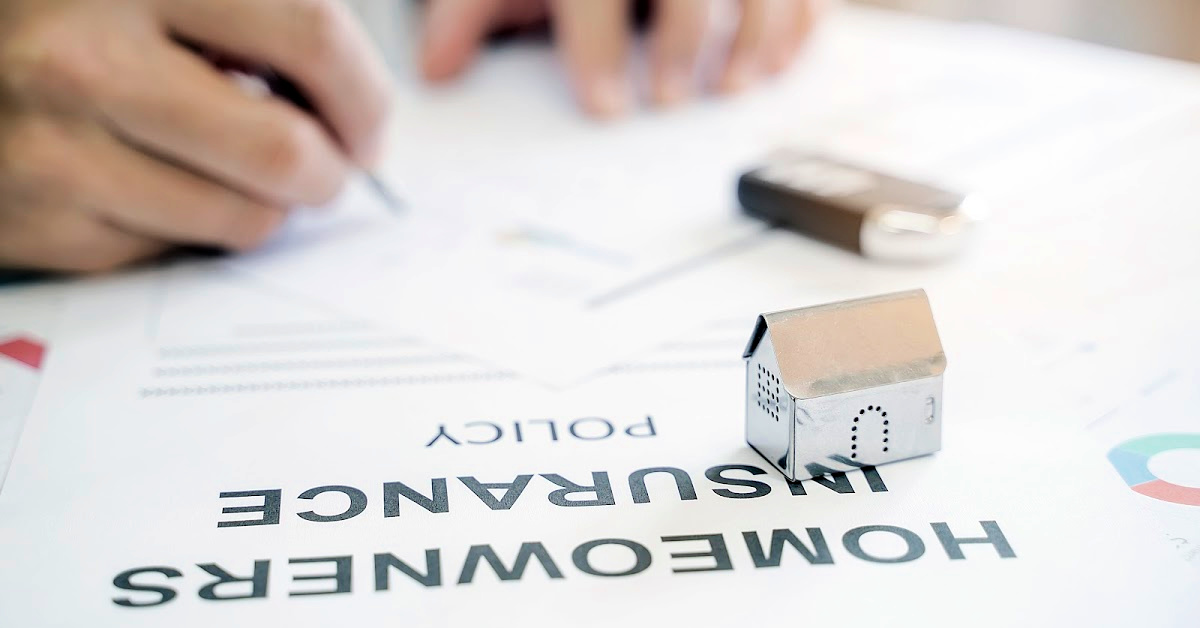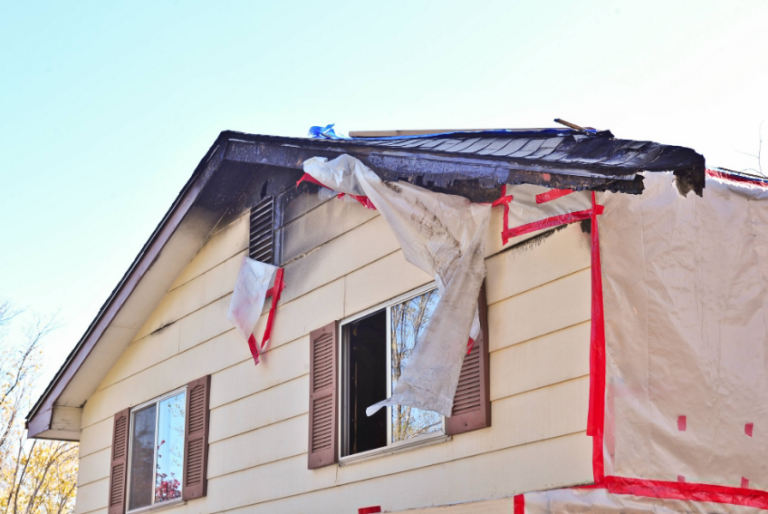Homeowners Insurance Blog – A homeowners insurance blog is a website that provides information, tips, and advice on homeowners insurance. These blogs may be written by insurance companies, industry experts, or independent bloggers who want to educate homeowners on the importance of insurance coverage and how to get the most out of their policies.
Trupanion Affiliate Program: Earn by Referring Pet Insurance Policies
Examples of Homeowners Insurance Blog

Here are some examples of homeowners insurance blogs:
Understanding Homeowners Insurance
Homeowners insurance is a type of insurance policy that provides financial protection to homeowners in case their property is damaged or destroyed by unexpected events, such as natural disasters, theft, or accidents.
Homeowner’s insurance policies typically provide coverage for the physical structure of the home, personal belongings, liability protection, and additional living expenses if you need to temporarily relocate due to damage to your home.
Why do I need homeowners insurance?

- Protects your home
- Covers personal belongings
- Provides liability protection
- Required by mortgage lenders
- Covers additional living expenses
What is covered under a standard homeowners insurance policy?

A standard homeowners insurance policy typically provides coverage for the following:
- Dwelling coverage: This provides protection for the physical structure of your home and any attached structures, such as a garage or deck, if they are damaged or destroyed by a covered event, such as fire, lightning, windstorm, or hail.
- Personal property coverage: This covers your personal belongings, such as furniture, clothing, and electronics, if they are damaged or destroyed by a covered event, such as fire, theft, or vandalism.
- Liability protection: This provides coverage if you are found liable for injuring someone or damaging their property, including legal fees and damages.
- Additional living expenses: This covers the cost of living expenses if you need to temporarily relocate due to damage to your home, such as hotel stays and meals.
- Flood insurance: This provides coverage for damage caused by flooding, which is typically not covered under a standard homeowners insurance policy.
- Earthquake insurance: This provides coverage for damage caused by earthquakes, which is also not covered under a standard homeowners insurance policy.
- Scheduled personal property coverage: This provides additional coverage for high-value items, such as jewelry, artwork, or collectibles, that may exceed the personal property coverage limits in a standard policy.
What is not covered under a standard homeowners insurance policy?

While a standard homeowners insurance policy provides coverage for a variety of events, there are certain things that are typically not covered, including:
- Floods
- Earthquakes
- Wear and tear – Homeowners insurance policies typically do not cover damage caused by normal wear and tear, such as aging pipes or a leaking roof.
- Neglect – Damage caused by neglect or failure to maintain your property is not typically covered under a homeowners insurance policy.
- War or terrorism
- Intentional acts – Damage caused by intentional acts, such as arson or vandalism, may not be covered under a homeowners insurance policy.
- Business activities
How to prevent common home insurance claims and losses
Preventing common home insurance claims and losses can help you avoid damage to your home and belongings and can also help you save money on your homeowners insurance premiums. Here are some tips to help prevent common home insurance claims and losses:
- Maintain your home
- Install safety features
- Secure your home
- Be aware of potential hazards
- Properly store hazardous materials
- Be prepared for emergencies
How to file a homeowners insurance claim and what to do if your claim is denied

If you experience damage to your home or property covered under your homeowners insurance policy, you may need to file a claim with your insurance company. Here are some general steps to follow when filing a homeowners insurance claim:
- Contact your insurance company as soon as possible after the damage occurs. Be prepared to provide details about the damage and any injuries sustained, as well as the date and time of the incident.
- Take photos and videos of the damage to your home and property. Keep records of any repairs or expenses related to the damage.
- Be cooperative and provide any information or documentation requested by your insurance company. This will help facilitate the claims process.
- Your insurance company will likely send an adjuster to inspect the damage to your home and property. Be sure to provide them with any documentation or information they need.
- After the adjuster has inspected the damage, your insurance company will provide a settlement offer. Review this offer carefully and make sure it covers all the damage you sustained. If you are satisfied with the settlement, you can accept it.
If your claim is denied, there are several steps you can take:
- Review your policy: Review your homeowners insurance policy to understand why your claim was denied.
- Contact your insurance company: Contact your insurance company to ask for an explanation of the denial.
- File an appeal: If you believe the claim was denied in error, you can file an appeal with your insurance company. Be prepared to provide any additional documentation or information that may support your claim.
- Seek legal advice: If your claim is still denied, you may want to consult with an attorney who specializes in insurance law.
Crafting Effective SMS Scripts: Tips and Tools for Successful Communication
lemonade homeowners insurance
Lemonade is a technology-based insurance company that provides homeowners insurance policies. Their policies are designed to be simple, transparent, and affordable.
Lemonade’s homeowners insurance covers damage to your home and personal property caused by covered events such as fire, theft, vandalism, and certain natural disasters. It also provides liability coverage if you are found legally responsible for injuries or property damage to others.
One of the unique features of Lemonade’s homeowners insurance is its “Instant Everything” process, which allows customers to purchase a policy and file a claim quickly and easily through the Lemonade app. The app uses AI technology to process claims and payout reimbursements quickly.
Lemonade also offers a range of optional coverage options, such as coverage for water damage, earthquake damage, and high-value items like jewelry and art.
kin insurance
Kin Insurance is a technology-based insurance company that provides homeowners insurance policies. They offer coverage for homeowners in areas that are prone to natural disasters such as hurricanes, tornadoes, and earthquakes.
Kin Insurance’s policies cover damage to your home and personal property caused by covered events, including natural disasters, theft, and vandalism. They also provide liability coverage if you are found legally responsible for injuries or property damage to others.
One of the unique features of Kin Insurance is its use of data and analytics to offer personalized coverage options to customers. They use algorithms to evaluate the risk factors associated with a particular property and tailor coverage accordingly.
Kin Insurance also offers a range of optional coverage options, such as coverage for water damage, identity theft, and high-value items like jewelry and art.
home insurance add ons
Home insurance add-ons, also known as endorsements or riders, are optional coverage options that you can add to your standard homeowners insurance policy for additional protection. Here are some common home insurance add-ons:
- Personal property coverage: This add-on extends the coverage limit for your personal belongings, such as clothing, furniture, and electronics, beyond the standard policy limits.
- Water backup and sump pump overflow: This add-on covers damage caused by water backup from a sewer or drain or sump pump overflow, which is not typically covered under a standard home insurance policy.
- Earthquake insurance: If you live in an earthquake-prone area, you may want to consider adding earthquake insurance, which covers damage caused by earthquakes.
- Flood insurance: Standard homeowners insurance policies typically do not cover damage caused by floods. If you live in a flood-prone area, you may want to consider adding flood insurance.
- Identity theft coverage: This add-on provides coverage for expenses incurred as a result of identity theft, such as legal fees and lost wages.
- Scheduled personal property: This add-on provides extra coverage for high-value items such as jewelry, art, and antiques.
house insurance immediate cover
It’s possible to get immediate coverage for your house insurance in some cases, but it depends on the insurance company and the specific circumstances. Here are some factors that can affect how quickly you can get house insurance coverage:
Online applications
Many insurance companies now offer online applications that can be completed quickly, often in just a few minutes. If you apply online and receive approval, you may be able to get immediate coverage.
Underwriting process
The underwriting process is the process by which the insurance company evaluates the risk associated with insuring your home and determines the appropriate coverage and premium. In some cases, this process can be completed quickly, allowing you to get coverage immediately. However, in other cases, the underwriting process may take longer, which could delay coverage.
Payment method
If you pay for your house insurance policy with a credit card or another electronic payment method, you may be able to get immediate coverage. However, if you pay by check or another method that requires processing time, it may take longer to get coverage.
Pre-existing conditions
If your home has pre-existing conditions, such as damage from a previous event, it may take longer to get coverage. The insurance company may require an inspection or additional documentation before offering coverage.
ho1 insurance
HO1 insurance is a type of basic homeowners insurance policy that provides coverage for a limited set of perils. HO1 insurance policies are also commonly referred to as “named peril” policies because they only cover specific perils that are explicitly listed in the policy.
Perils covered by an HO1 insurance policy typically include fire, lightning, windstorm, hail, smoke, theft, vandalism, and damage caused by vehicles. However, each insurance company may have a slightly different list of covered perils, so it’s important to review the specific policy carefully.
HO1 insurance policies are typically the most basic and least expensive type of homeowners insurance policy. However, they also provide the least amount of coverage. For example, an HO1 policy may not cover damage caused by water or sewer backups, earthquakes, or floods.
For homeowners who want more comprehensive coverage, there are other types of homeowners insurance policies available, such as HO2, HO3, HO4, HO5, and HO6 policies. These policies offer broader coverage and typically include more perils than HO1 policies.
